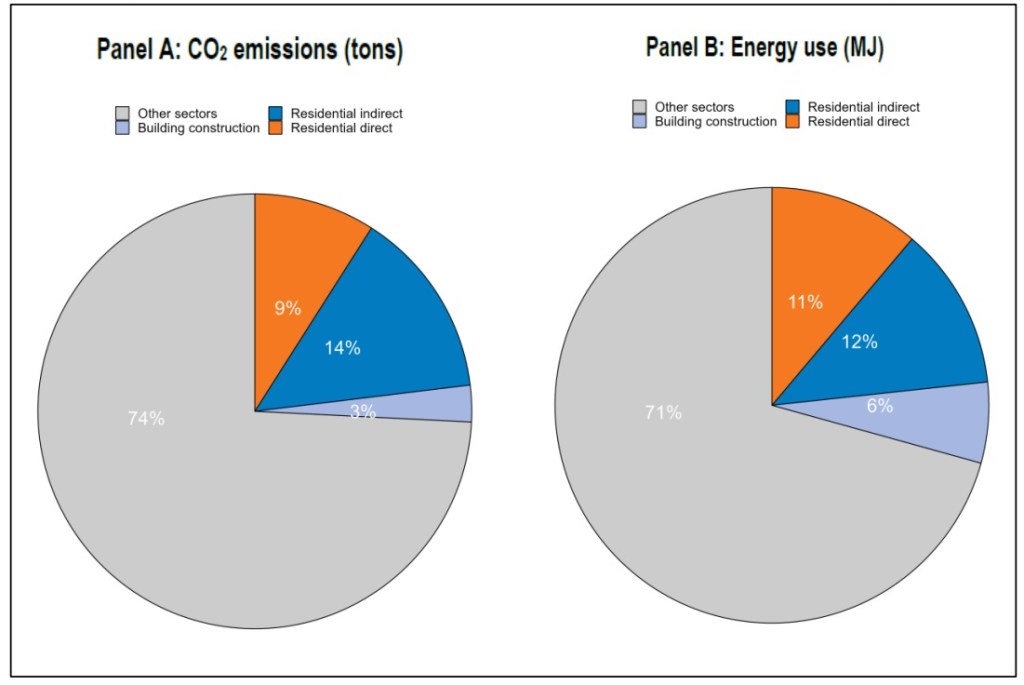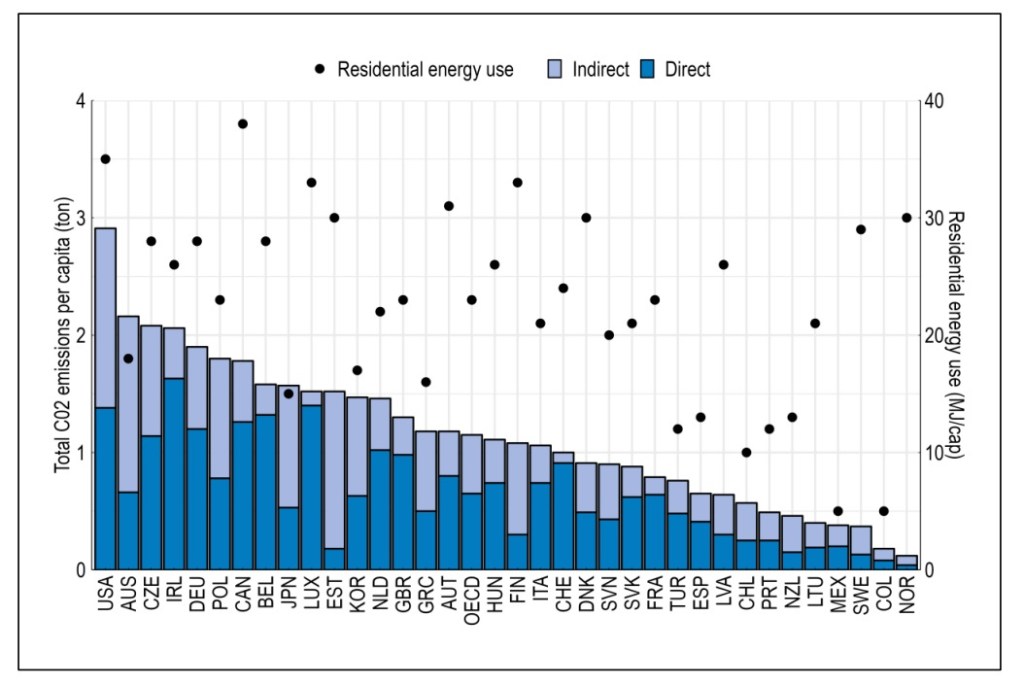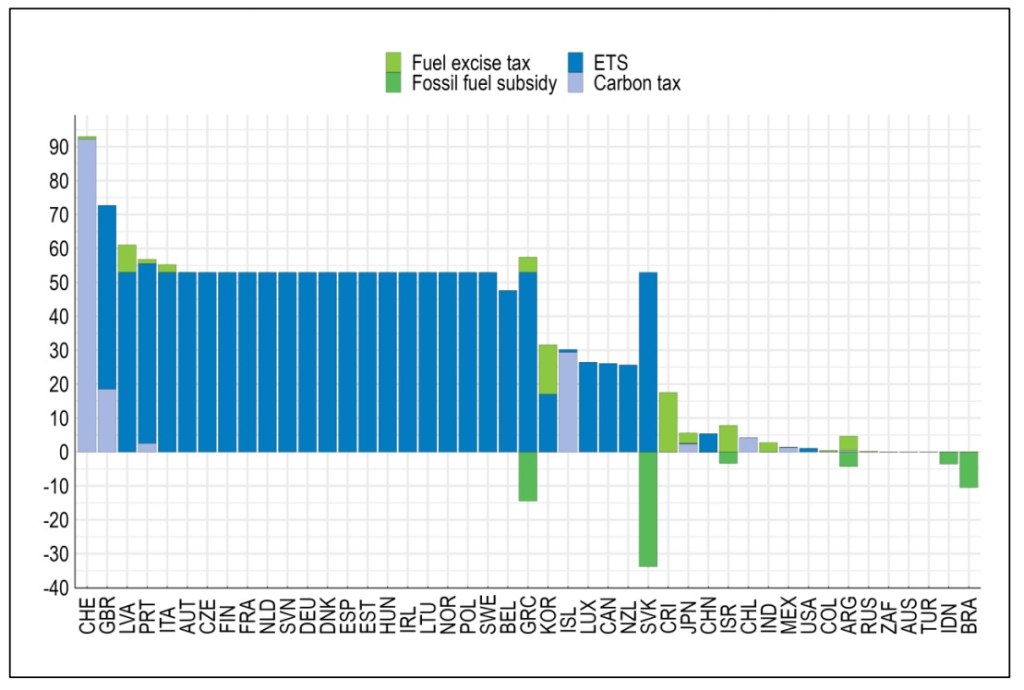Decarbonising the Housing Sector: Pathways to Net-Zero Emissions by 2050
By Volker Ziemann, OECD Economics Department
In 2020, over a quarter of total CO2 emissions in the OECD originated in the housing sector. These emissions are generated through space and water heating, cooling, ventilation, lighting, and the use of appliances and other electrical plug loads. Homebuilding is also emission-intensive, accounting for 6% of total CO2 emissions.
Figure 1. Housing accounts for a large share of CO2 emissions
Sectoral decomposition of OECD CO2 emissions and energy use, 2020

CO2 emission levels vary considerably across countries ranging from nearly three tonnes per capita in the United States to almost zero in Norway. These vast differences indicate that even countries with harsh climates can achieve low emission levels. One of the keys to decarbonising the housing sector is to reduce direct emissions from on-site combustion of fossil fuels such as oil and natural gas for heating and cooking. Electrification and energy efficiency improvements are the primary vehicles to get there. Reducing indirect emissions, those originating from electricity use, then hinges on decarbonising electricity production.
Figure 2. Several countries have high home energy needs, but low CO2 emissions
Total CO2 emissions and energy use of the residential sector, 2020

Most OECD countries have pledged to reach net-zero emissions by 2050, and some have set even more ambitious targets to achieve this goal earlier. Bringing the housing sector on track to meet these targets requires stepping up efforts and going beyond environmental regulation and encompassing economic, social, innovation, tax, and spending policies.
The recent OECD working paper, “Home, Green Home: Policies to Decarbonise Housing“, delves into the various policy options for rapidly decarbonising the housing sector and recommends to:
- Align carbon prices of energy used in homes with those that apply to other sectors. This can be achieved by explicitly taxing the carbon content of energy sources or by emission trading (applied to energy suppliers).
Figure 3. Effective carbon rates are a long way from being similar across sectors and countries
EUR per tonne of CO2
Panel A: Building use

Panel B: Electricity sector

- Ensure carbon-free electricity generation, as a lot of the decarbonisation of homes will have to come from their electrification.
- Overcome the split incentive problem between landlords and renters by allowing landlords to recover part of the energy bill saving from energy-efficiency improvements when rent levels are updated.
- Extend energy performance certification to all properties, not only those for sale.
- Strengthen energy efficiency standards on appliances and new buildings to align with the net-zero emission target.
- Offset adverse effects of mitigation measures on vulnerable social groups without blunting incentives to save energy.
- Focus on retrofitting the worst existing housing units.
- Abolish remaining subsidies for fossil fuel boilers.
- Lead the way by building new and retrofitting existing social housing units according to high environmental standards.
- Promote greater international comparability and transparency of green building standards to facilitate alignment of green real estate assets with the net-zero target.
- Ensure local-level regulations, spending power, and resources are consistent with national decarbonisation goals.
Implemented together, these policy instruments can decarbonise housing at a pace compatible with climate targets and in a way that is consistent with social-inclusion objectives while avoiding unnecessary economic costs.
References:
Hoeller, P. Ziemann, V. , Cournède, B. and M Bétin (2023), “Home, green home: Policies to decarbonise housing “, OECD Economics Department Working Papers, No. 1751, OECD Publishing, Paris, https://doi.org/10.1787/cbda8bad-en.